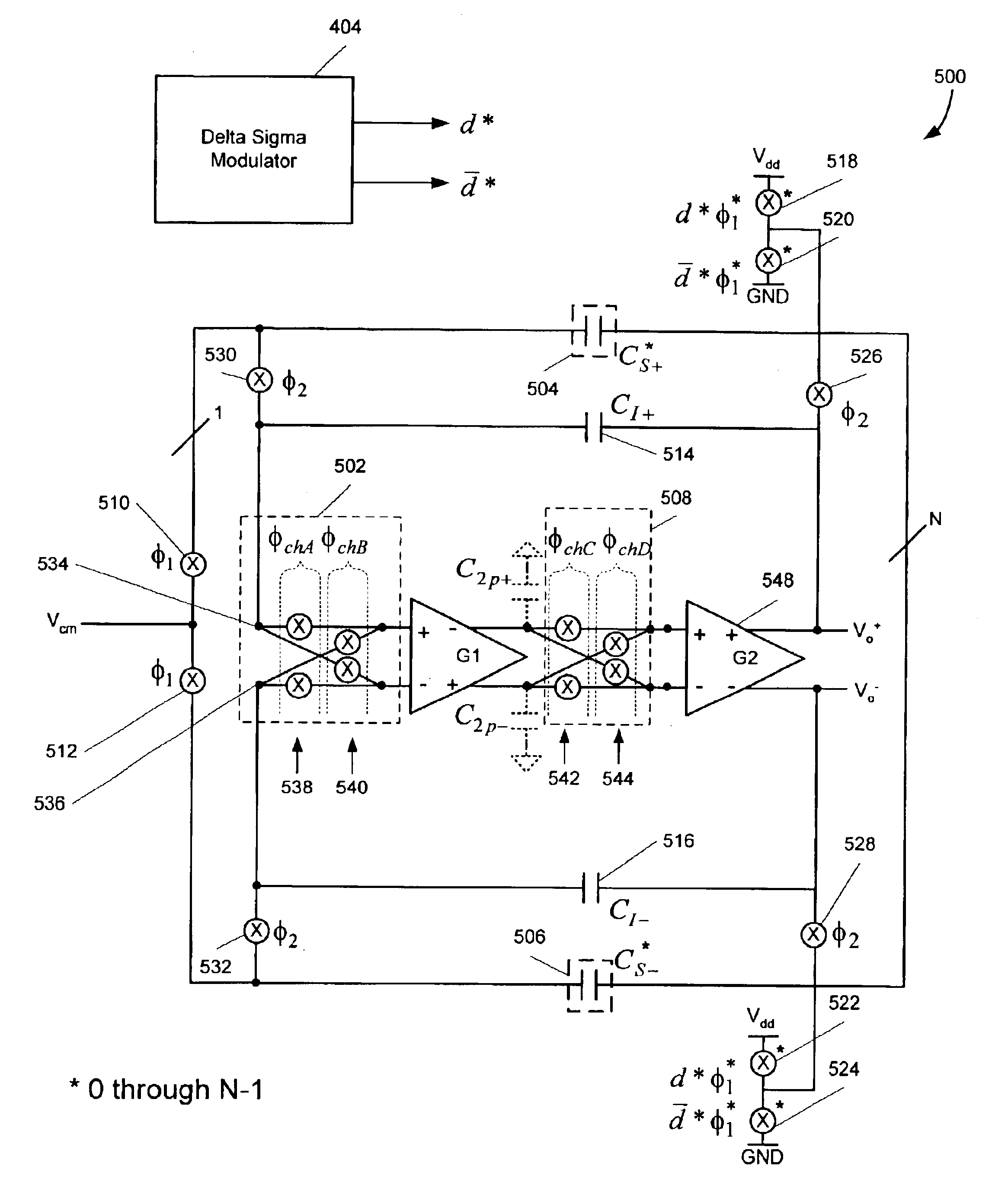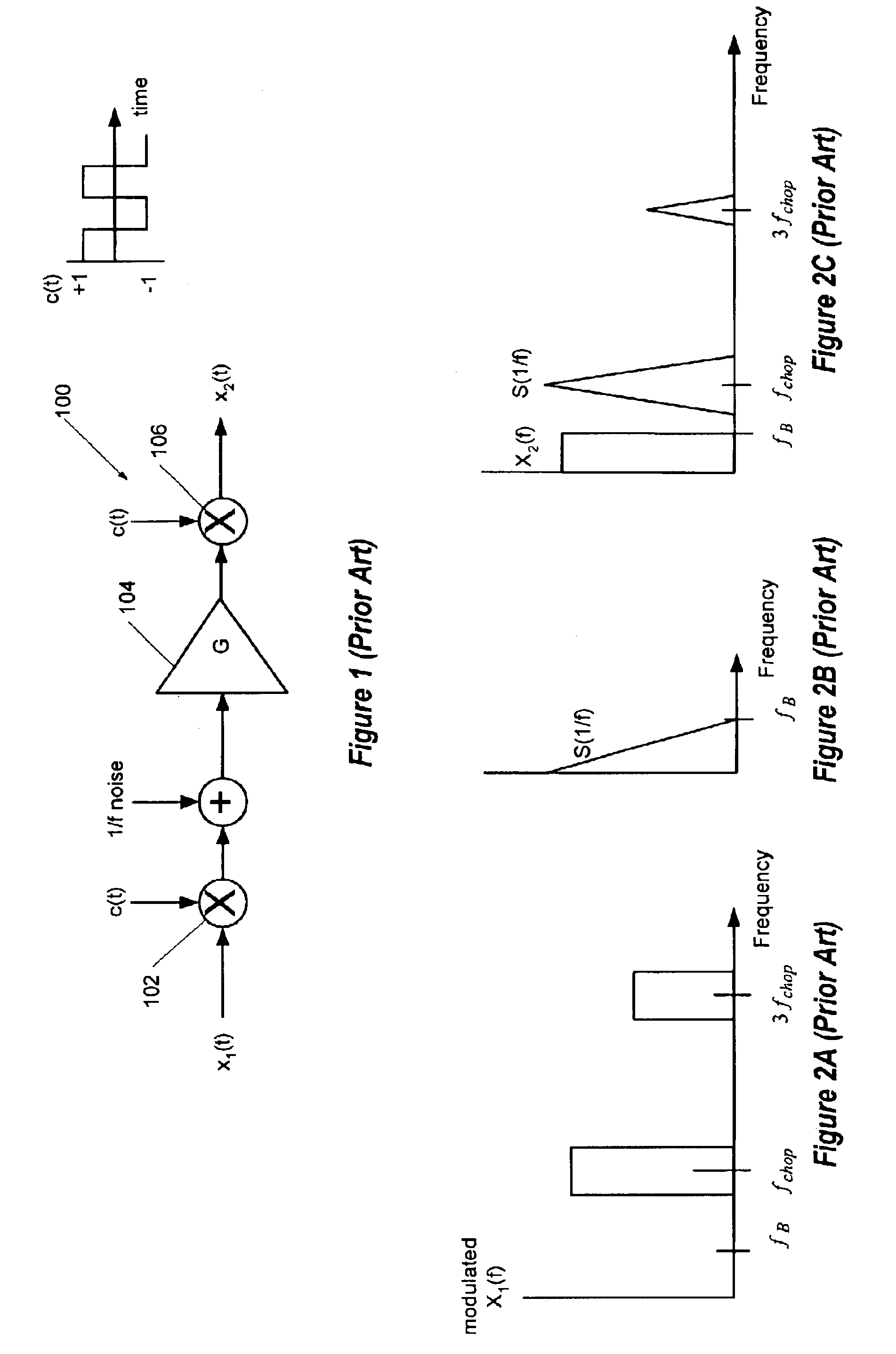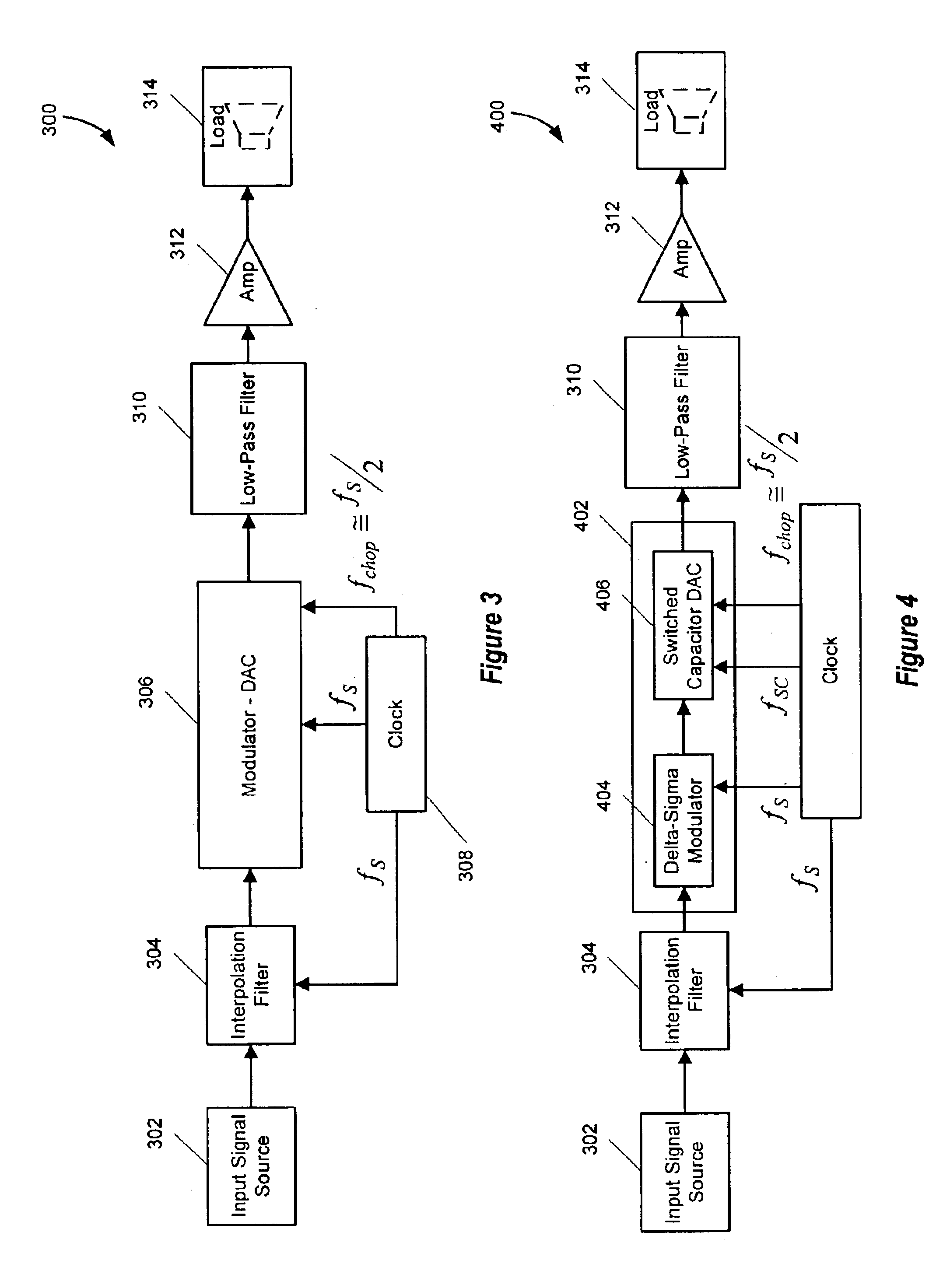Signal processing system with baseband noise modulation and noise fold back reduction
- Summary
- Abstract
- Description
- Claims
- Application Information
AI Technical Summary
Benefits of technology
Problems solved by technology
Method used
Image
Examples
Embodiment Construction
Signal processing technology operates on analog, digital and mixed signals (analog and digital). For example, audio signals, representing a signal of interest and having frequency components residing within a baseband, begin as analog signals and are often digitized through sampling, and converted back into analog output signals using a digital-to-analog converter (DAC). Audio frequency analog output signals produce sound through a loud speaker, headphones, or other output device. Embodiments of the DAC system described herein utilize chopping modulation technology to remove 1 / f and other baseband noise from a baseband of a signal of interest. In some embodiments, the chopping frequency is carefully selected to reduce noise fold back into the baseband. Additionally, one or more notch filters are implemented to address parasitic modulation and associated noise fold back associated with non-ideal system properties, such as parasitic impedances. For example, a notch filter reduces the ...
PUM
 Login to View More
Login to View More Abstract
Description
Claims
Application Information
 Login to View More
Login to View More - R&D
- Intellectual Property
- Life Sciences
- Materials
- Tech Scout
- Unparalleled Data Quality
- Higher Quality Content
- 60% Fewer Hallucinations
Browse by: Latest US Patents, China's latest patents, Technical Efficacy Thesaurus, Application Domain, Technology Topic, Popular Technical Reports.
© 2025 PatSnap. All rights reserved.Legal|Privacy policy|Modern Slavery Act Transparency Statement|Sitemap|About US| Contact US: help@patsnap.com



